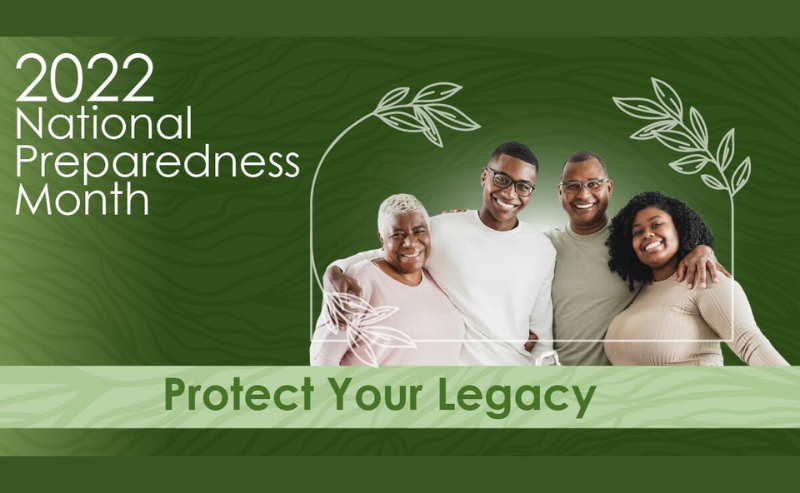Every year (since 2004), the United States observes September as National Preparedness Month. It’s a time when FEMA, through its Ready Campaign, encourages Americans to better prepare themselves, including their homes, schools, businesses, and communities, for natural and human-caused disasters. And it comes as the nation again reflects on the tragic events of 9/11 and apprehensively enters the peak of the Atlantic hurricane season.
The theme of National Preparedness Month 2022 is “A Lasting Legacy: The life you’ve built is worth protecting. Prepare for disasters to create a lasting legacy for you and your family.” Public service announcements about the theme will be released throughout September, helping get preparedness information into the hands of everyone, especially those who live in underserved communities. For 2022, the month-long campaign will feature a call to action for the Black and African American communities.
Better emergency preparedness can be achieved in a number of ways. For starters, get familiar with the types of disasters most likely to happen in your area. Understand your risk, particularly if your home or business lies in or near a floodplain. Through its Risk MAP program, FEMA consistently releases new flood maps and data, giving communities across America access to helpful, authoritative data that they can use to make decisions about flood risk. Flood maps are available from FEMA’s Flood Map Service Center (MSC).
Consideration: Any place with a 1% chance or higher chance of experiencing a flood each year is considered to have a high risk.
Secondly, develop a plan of action. In a personal setting, such plans let each household member know what to do in a particular disaster situation and prepare accordingly. This simple action alleviates fears (especially for children), minimizes stress, and saves precious time in an emergency.
In the workplace, such plans support an organization’s immediate response to an emergency and its ability to function, at least minimally, in the hours, days, and sometimes weeks following a disaster. These typically include emergency operations plans (EOPs) and continuity of operations plans (COOPs).
An EOP is a plan for how an organization, typically by department or annex, will function during a given situation’s mitigation, preparedness, response, and recovery phases or the emergency response to an actual event/incident. A COOP plan outlines how an organization will continue to provide services until operations can be fully restored. It addresses relocation/alternate facilities, orders of succession, delegations of authority, communications, and other key areas post-disaster.
Consideration: It is crucial to review, if not rehearse/exercise, these plans on a regular basis – at least once per year. This will allow you to make improvements, further ensuring your organization’s ability to respond to and ultimately recover from a disaster.
National Preparedness Month is also the perfect time to review your state, local, tribal, or territorial (SRTT) government’s hazard mitigation plan. Such plans, as you know, reduce loss of life and property by minimizing the impact of disasters. And per FEMA requirements, they must be updated every five years for SRTT governments to remain eligible for certain pre-disaster funding.
Last but certainly not least, let National Preparedness Month serve as your reminder to build, or replenish, your disaster kit(s). Such kits should be well stocked but light enough to grab and go at a moment’s notice. Essentials include water, food (at least a three-day supply of non-perishable items), first-aid supplies, a flashlight, extra batteries, a blanket, a cellphone/charger, and cash. Throw a whistle in for good measure, as it may prove useful during search and rescue operations.
Consideration: A complete list of disaster kit items can be found online at https://www.ready.gov/kit.
Organizations looking to complement their disaster kit may also find it beneficial to:
– Purchase a NOAA/weather alert radio and monitor it (keep additional batteries on hand)
– Post emergency numbers and procedures throughout your facility, as well evacuation routes for employees, customers, and others
– Plan ahead to accommodate individuals with special needs
As evidenced by the past, disasters can strike at any moment and with little notice. At BOLDplanning, a division of Agility, we urge you to take this special time, National Preparedness Month 2022, to improve your personal and/or organizational preparedness. The time, money, and effort you put in today can help create a “lasting legacy” for tomorrow.
National Preparedness Month culminates on September 30th with National Preparedness Day, the National Day of Action.






